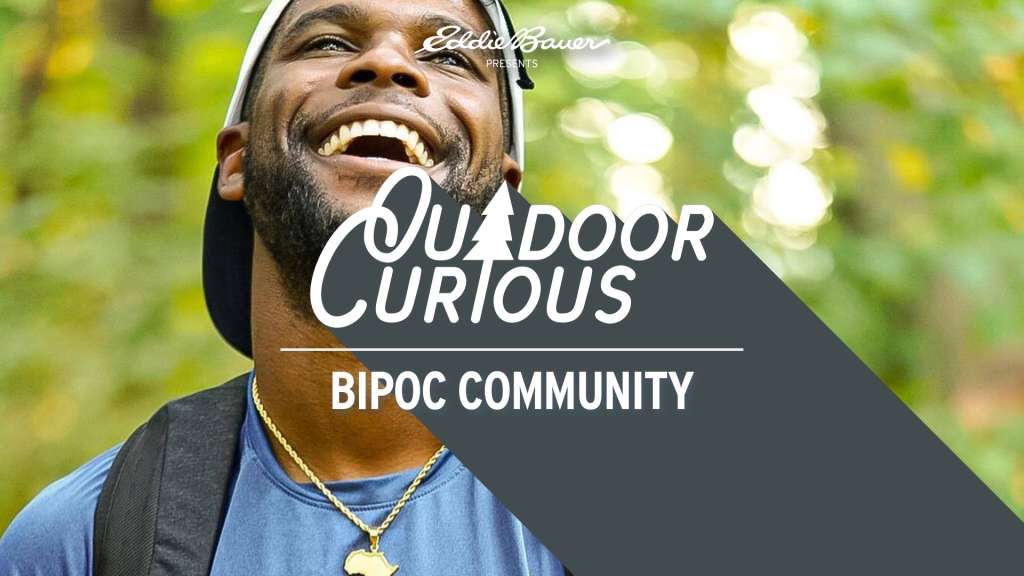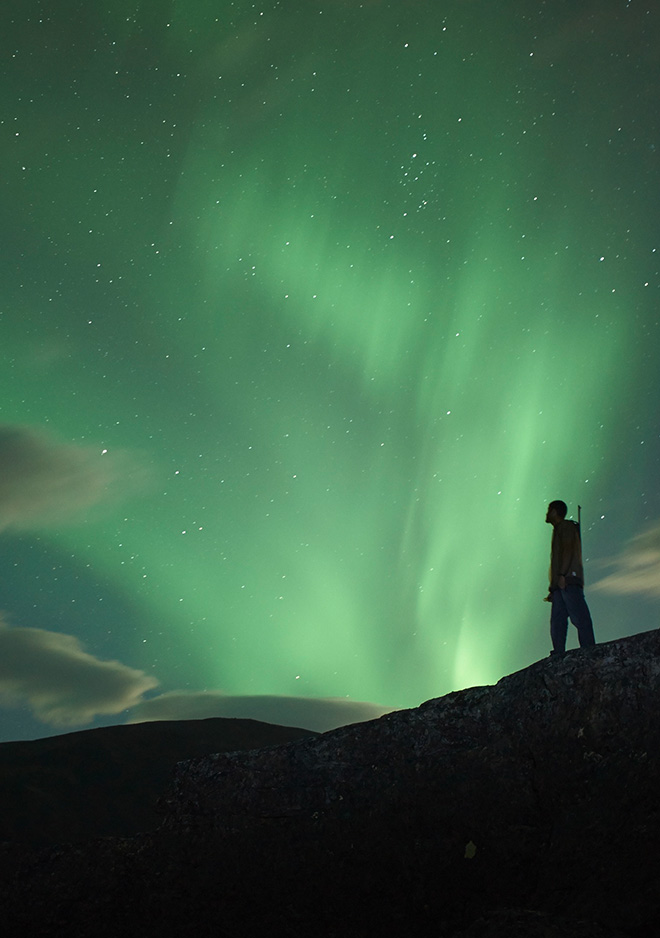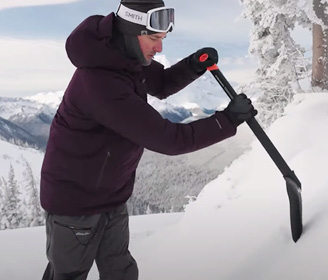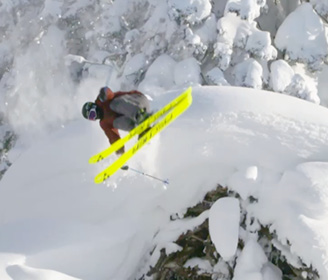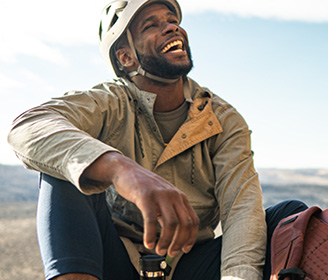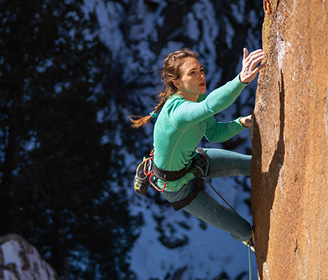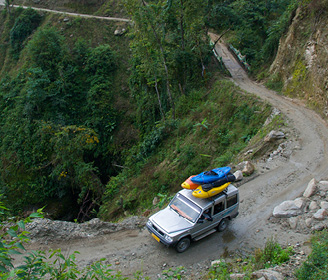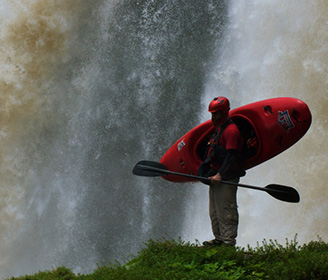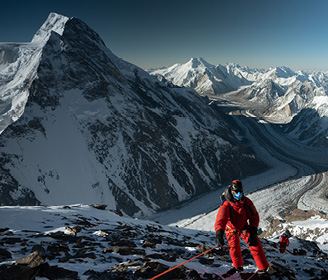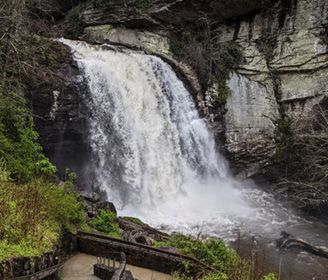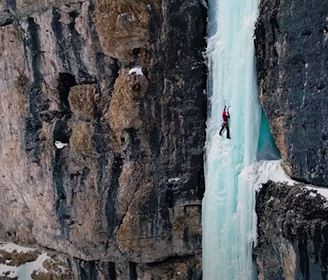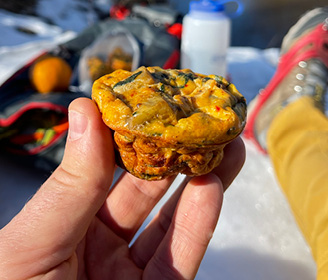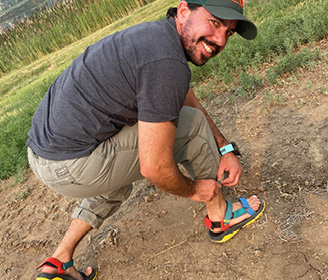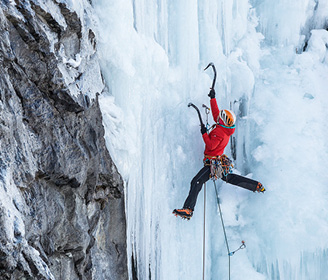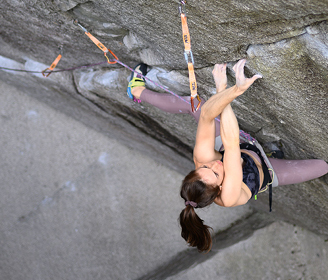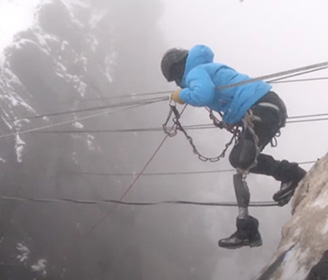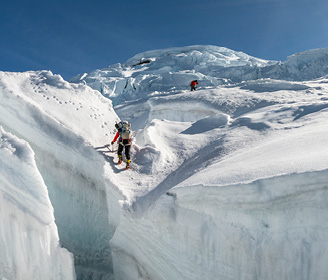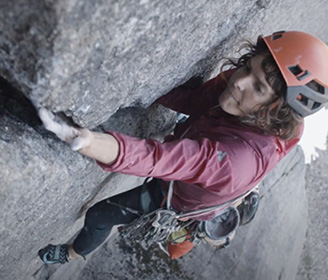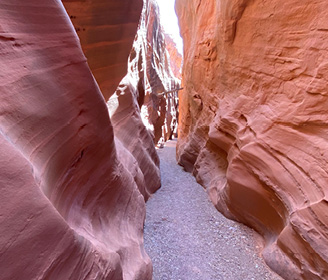Eddie Bauer One Outside Guide Tyrhee Moore is the founder of Soul Trak Outdoors, a DC based NPO that connects communities of color to outdoor spaces while also building a coalition of diverse outdoor leaders. In this Outdoor Curious, he answer’s top questions about experiencing the outdoors in the BIPOC Community.
00:31 – Are there resources for BIPOC communities who want to go outside together?
One thing that I’ve seen that has become really helpful, many people sort of find myself and Soul Trak is Diversify Outdoors, which is a website that sort of has a coalition of BIPOC community leaders and organizations, and just a ton of resources. Believe it or not, both social media and Google have been an incredible resource for both myself, but I know a lot of our community members at Soul Trak have found us through those platforms. They’re just sort of continuously growing. They’re becoming much more detailed and, has a lot more utility to them. And then, yeah, like I said, I think social media has really brought a lot of visibility to communities of color in the outdoor space.
01:18 – What are the ways that we can make the BIPOC community feel more included outdoors?
I know personally stepping into the traditional outdoor space, it sort of comes with so many preexisting expectations or rules or norms that can be very exclusive or even intimidating. And sometimes that can be hard if they don’t feel included or they don’t feel secure. And so I would say just being able to create an environment where people can’t just create their own sense of norm.
01:46 – What if being outdoorsy conflicts with my identity or my friends and family?
First, establish your own definition of what outdoorsy means. Immediately that has, it’s so loaded. It has so many different meanings. If we allow general society to define that, it’s probably a white guy, right? And so immediately that excludes so many people from that term. And so I think that we have to sort of take the power back and create a new definition for that ourselves. If your family and friends are also struggling with that as well. Sometimes I know that my family, in particular, also are conflicted with the thought of like considering themselves outdoorsy and didn’t really understand what that meant in relation to them and their lifestyles. My family growing up really appreciated things like cooking out on a grill in our local parks. And they might not have seen that as being outdoorsy. But if we can recreate those experiences again, show them that we are on public land, we are outside, we’re with nature, and just really validate that, it can really shift how people think of themselves and their willingness to try new things outside because the problem is they may have never even considered themselves outside to begin with. And so they’ve completely written it off, but once you kind of show them that they spend time outside that sort of helps them say, okay. Like I can do a lot of other things outside. I’ve seen that be very successful with the people I call my community. And so I would encourage that for others as well.
03:16 – What is the adventure gap?
I would describe it as sort of a racial divide between those who are participating in traditional outdoor activities and those who don’t. Ultra running is about, like 90% are white males. And that right there is an adventure gap to me. Like there is a huge demographic dominating a particular outdoor sport. For me personally, in my work with Soul Trak, we do a lot of work redefining what that gap looks like. Adventure can be anything that we imagine it to be in our backyards. I think we have a much better chance to maybe potentially build upon those, building new norms and that could sort of bridge a relationships like more, I guess, extreme sports. But we have to validate these much earlier experiences first to give people the confidence or just the ability to even go further in what they wanna sort of do outside.
04:11 – How did you get into mountaineering?
I first got into mountaineering, I took a 30 day outdoor educator mountaineering course with the National Outdoor Leadership School, when I was 18. I was in the Cascades, in the Pacific Northwest, Washington state and British Columbia. I had done a lot of backpacking. I had done a lot of camping. I had spent a lot of time outside but this was sort of the first time that I had sort of literally taken myself to new heights. Then I sort of climbed Baker maybe a few months after that. And I kind of took off from there. I just like had fallen in love with big mountains, and sort of really like all of the work, and even teamwork that’s sort of required to sort of do that sport. And so, yeah, that was my first time, that’s so many years ago now, which is crazy.
04:58 – What are some important classes to be safe outside?
I would obviously recommend some outdoor living skills whether that’s things like camping 101, some intro paddling classes, intro to climbing, those things are typically available at local climbing gyms. I know REI has a lot of those intro classes available too. Local ecology or wildlife classes are really cool if like people are into photography or bird watching or even things like map reading or just like compass reading, I also love photography. So photography classes are cool. Painting classes, but just like, I think for me personally a lot of times working with community members here in DC is just a matter of identifying what nature is or outside is and becoming comfortable in those spaces. And so sometimes I lean into like try and find people’s initial interests.
05:49 – What are your thoughts on being the only one?
It’s sort of like tokenism. Like you have someone that is representative of the BIPOC community that exists in a very white space. It is very overrated. It’s can be extremely alienating, and honestly even depressing for, and I’m speaking for my own experience. I think that someone has to do it right. Sometimes it’s hard but there has to be sort of an introduction. Like someone has to sort of take that first step but sometimes that can be a very unrewarding experience for that individual and can be very challenging. It can create a very weird illusion that there is progress and there is diversity. And with that, I guess, it can become, it can slow progress because people don’t feel like there’s any other work that should be done. So I hope the only one becomes, no longer becomes a term at some point in time, down the line in a lot of these outdoor rec spaces.
06:45 – Who are your heroes?
I would say currently folks like Rue Mapp, who is the founder of Outdoor Afro. She’s just always been a really great role model. Her work has just been really impressive at that level and just sort of seeing how she sort of really paved the way for a lot of other organizations like myself. James Mills also is a really great role model for me. We’ve worked really closely through my time on Denali and just sort of throughout my development in the outdoor industry and just sort of utilizing folks like that as mentors and just sort of like, roadmaps, my mom, obviously. I think that I’ve leaned on her for a ton of advice. And then I would say, lastly my Soul Trak team, they’re my heroes. I feel like I have a huge attachment to my organization at Soul Trak that I started, but there’s so many people that have sort of made all of this a reality. It’s just such a strong community. And so many people show up, you know, real superheroes. I always say just they’re on the ground, they’re making things happen. And so I get to watch them within their like utilizing their superpowers day after day, with everyone that we come in contact with on a regular basis.
07:56 – What are your favorite DC area hikes?
So I actually live by a really amazing park, Fort DuPont Park. That is definitely my favorite park. I really enjoy Calvert Cliffs which is in Maryland, near Annapolis. It’s a great opportunity to sort of hike along the water, the Chesapeake Bay and Acosta River Walk. It’s really nice. It’s more of an urban hike. Probably my favorite hike in Shenandoah is White Oak Canyon. It’s kind of difficult. It’s very long, but it’s so many beautiful waterfalls all throughout the hike and a really fun river crossing.
08:32 – How do we embrace intersectional identities in the outdoors?
It’s important that we are thinking about leadership representation, both, also affinity space for these individuals to grow and feel secure in their learning. Things that we do internally but also with partners is when we are facilitating things like instruction, trying to have leaders who sort of also reflect the communities that they’re working with. Because I think that that sort of creates a very direct line of inspiration for the communities that we wanna uplift.
09:08 – Why is it important to get BIPOC youth outdoors?
One, because the outdoors I think provides so many personal development skills that it’s really hard to accomplish in many other spaces, whether that’s opportunities to lead. So just like building leadership skills at a very young age, it’s really important, especially under circumstances that may seem high stressed or challenging, whether that’s due to group dynamics or nature or Mother Nature. which can be really cool to sort of experiment with youth and just like giving them the opportunity to step up. It sort of helps build community in them. Again, I say this often but I think that there’s very few places where community is built stronger than being outdoors with just the people around you. Physical health, mental health. I think that those things also are sort of really important for our youth to be able to sort of embrace from the environment, being able to sort of naturally connect with the earth around them. There’s this term called biophilia, which sort of states that there’s like a very therapeutic state that we sort of enter into when we’re outdoors. And I think that that, if we can give youth that at a very young age and just show that that is a space for relief and just like therapy. Also I just think exploration and just like being able to use your imagination and just like push yourself. As much as it is important for our youth, I think that it’s even more important for our families to get outside. It really matters if their parents, their mentors, their older brothers and sisters can also enjoy those spaces with them as well because that is how we truly spark cultural change. Youth can’t just take themselves outdoors all the time. Their parents or someone has to get them there. And so if we can create a space that also accepts and just their parents can see, or their guardians can see value in.
11:01 – I live in a city, how do I get out there?
First, I would say, actually start at home. I always like to tell a lot of people here in DC that, or ask them, what’s in your backyard, what can you sort of enjoy locally so that you don’t always feel the pressure to have to really go far and explore out. And that sometimes, those things don’t work out or you’re not able to access them. You sort of give up on this connection or this enjoyment that you have for being outdoors. Once you’re able to sort of really appreciate those spaces, those are also great opportunities to maybe run into or find other local organizations that may provide other opportunities further out.
11:43 – Why do I feel guilty enjoying the outdoors?
Guilt settles really quickly. But I think it’s just about how do you, what do you do about that? And so for me, I would just suggest trying to find out, how do you combat where that guilt is being rooted at? Obviously the outdoors, when you’re, for me at least when you’re deep, deep in it, it reeks of white privilege. I was surrounded around primarily all white people. And so that immediately is a little shocking. I personally started to feel a level of guilt because I knew that I had sort of accessed something that so many other people weren’t able to access. And so I wanted to sort of figure out how I could reallocate some of that privilege that I had come upon to others.
12:26 – What are some BIPOC artists or authors to get inspired about the outdoors?
Definitely Carolyn Finney Black Faces, White Spaces, James Mills, The Adventure Gap, which featured myself and eight other climate members, the first attempt to climb Mount Denali which is the highest peak in North America. Camille Dungy, Black Nature. I really like Wild Gina. In terms of artists that I follow on social media, Jitterbug Art, is one of, her name is Latasha Dunston. Brooklyn Bell is a really great artist. Lamont Joseph White. He does a lot of ski art that I really appreciate.
13:13 – What are some things I can do with my family?
whatever feels natural, I guess, untraditionally, I like to tell people there’s all sorts of things. You can star gaze. You can take your kids painting outdoors, bird watching, get you some binoculars. even just walking. Walking, hiking, gardening, if you have a yard or if you have any sort of green space or there’s urban plots that you can sort of join. Those are really great ways to just feel in touch and just like feel a part of nature. Bringing your kids toys outside in the park. I just like to tell people that those are recreational spaces that are free, in most cases free for use.
13:53 – What can the outdoor industry do to be anti-racist?
Transparently, we probably have to do a hard reset just because I think the infrastructure was sort of created around just sort of pillaging and just really mass exodus of like native communities. And so I think that that’s really tough. It is a very targeted towards white communities. So to my point around like campsites, when we’re thinking about capacity, when we say four people, like that can be very exclusive. In some communities, four is a very small family size. And so considering those types of things when we’re implementing rules and policies, I think we need to have more people in the room to help sort of build out what that looks like and what is deemed appropriate. The industry will slowly change, but I think that right now just people are carrying guilt instead of trying to figure out how they can sort of relieve themselves of some of that privilege that they carry. And I think that that can be really important from a personal level to just figure out what things am I carrying that I could potentially share with others?
15:03 – What is something allies should know about your experience outdoors that maybe they don’t realize?
I guess in my experience, in the past year and a half, two years, there’s been this huge sort of rally of support for more diversity in the outdoor space. And there, I feel like is a genuine care sort of desire to sort of create change. But I don’t think that people realize the amount of power of representation in making those things happen. And so maybe something that people don’t realize is that it’s really hard to facilitate change when that presence or that diversity isn’t also being reflected outwards in leadership, or even in the sort of the, I guess the process of the folks that are sort of involved in the process of change. And so to my point is that when we are thinking about creating access, building tools for diversity, a lot of those people from my experience are still currently, sort of identify with the white majority. And so sometimes that can be really hard to, it may sort of be creating progress internally and like making these larger entities feel like they’re being productive. But to some degree that may still be creating a huge amount of uncertainty or fear in communities of color because that still isn’t directly being reflected. And so that can sort of be a little bit disingenuous. And I don’t know if that some people don’t realize but I think that it’s kind of one of those things where a lot of people move through their own intention but sometimes impact is still a little different than what people may realize.
16:50 – How do we get involved with Soul Trak if we are in the DMV? I’d love to volunteer.
That’s what I love to hear. You can visit our website, SoulTrak.com. There’s a Volunteer tab where you can see different opportunities to be involved. You can reach out directly through there. We’re also social media, Soul Trak Outdoors, DM us, reach out directly there. And we’ll definitely direct you to where you need to go. Just reach out.
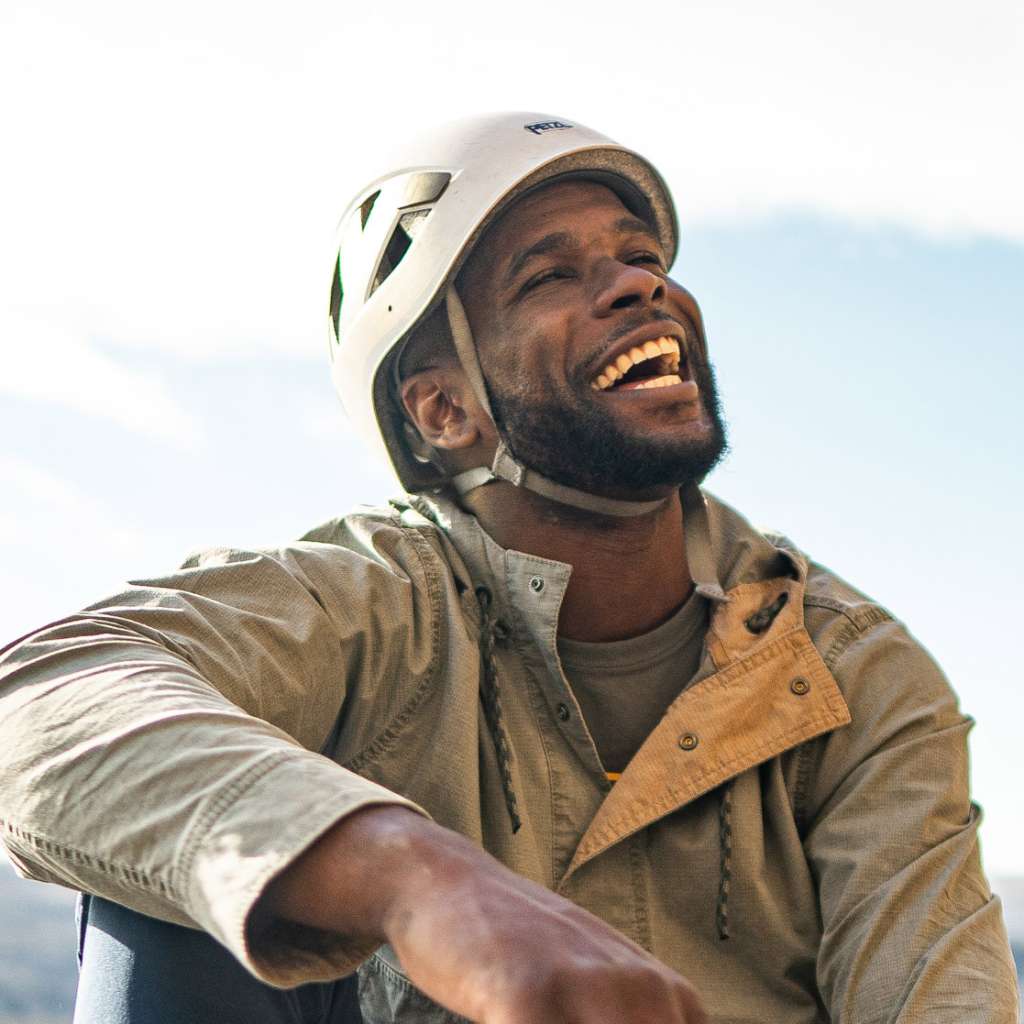
TYRHEE MORE
Eddie Bauer One Outside Guide
Tyrhee is a mountaineer and outdoor education advocate born and raised in southeast Washington, D.C. In 2018, he founded Soul Trak Outdoors, a D.C.-based nonprofit that connects communities of color to outdoor spaces while also building a coalition of diverse outdoor leaders.

